Most believers and Bible scholars differ on which is the most accurate Bible translation, and I’ll go over the beginnings of the Bible, its translations and versions, and the misconceptions that both scholars and believers have about which Bible translation is the most correct.
From creation until the birth and death of our Lord and Savior Jesus Christ, the Holy Bible, also known as Holy Scripture, has told the most accurate Word of God.
Although it was initially written in Hebrew and Greek, the Bible’s Old Testament and New Testament have undergone several alterations over the past 1500 years.
The Old Testament of the Bible is similar to the Hebrew Bible, according to history.com, but the first known mention of Israel is in a 13th-century Egyptian inspiration.
The Bible is divinely inspired and constitutes Holy Scripture, and it is currently being translated into 2,731 languages with 704 languages completed as of October 2020.
The Targums were utilized by the early church and apostles in the Aramaic language. The New Testament, on the other hand, evolved over time, but others include different texts in their sacred works, such as the biblical Apocrypha or deuterocanonical literature.
Is the English Version the Most Accurate Bible Translation?
The English Bible is the most accurate Bible translation available. The King James Version (KJV) translators went to considerable measures to ensure that their translation was as near to the Hebrew and Greek source texts as possible.
They looked at previous translations in a variety of languages, including Tyndale’s English translation from 1534, which he finished before being murdered for his work.
Their purpose was to translate an existing Greek book into English that had been adapted from ancient Hebrew manuscripts. They employed a variety of techniques to verify that the meaning of the text was accurately transferred from one language to another.
The KJV was translated more than 400 years ago and is written in the English language that has since developed, making it difficult to interpret for current readers.
There are, however, other translations available today that are based on the same original Greek text as the KJV and employ modern English. The English Standard Version (ESV), New American Standard Bible (NASB), and Holman Christian Standard Bible are among them (HCSB).
Dynamic translations, such as the New International Version (NIV) and the New Living Translation (NLT), focus on translating ideas rather than word-for-word interpretation. This
What is the most accurate translation of the Bible in the world?
Because of its numerous outstanding translations, the English Bible Translation is widely regarded as the most accurate Bible version. With so many English translations of the Holy Bible to pick from, how can you know which one is the most accurate?
What are the different Bible translations?
The difficulty for readers with Bible Translation is that the Bible was not originally written in English.
The early Bible translations were written in several languages. The Old Testament was written in Hebrew and Aramaic, and the New Testament in Koine Greek.
Types of Bible Translations
There are various types of Bible translations available on the market today. This section explains the many types of Bible translations and their purposes.
Literal:
For people who have a good command of the English language and want to study the Scriptures in their original form, a literal or word-for-word translation is a good option. The New American Standard Bible (NASB) and the English Standard Version are two examples (ESV).
Dynamic Equivalent:
A dynamic equivalent or thought-for-thought translation is best suited for people who wish to understand the meaning of the Scripture rather than focusing on each individual word. The Message and the New Living Translation are two examples (NLT).
Paraphrase:
A paraphrase aims to capture the literary style and elegance of the original languages by utilizing contemporary English expressions and words that people reading it today will understand. The Living Bible is one such example (TLB).
Bible Translation Comparison Chart
A comparison of Bible translations can be quite revealing regarding the accuracy and reliability of the different versions. In the chart below are listed some of the most popular English versions. A brief synopsis of each version is given, followed by a list of the strengths and weaknesses of each translation.
As you consider which Bible translation to use, both for personal reading and study and for public worship, we encourage you to look at the following chart as a helpful tool in selecting a Bible that best suits your needs.

Top 5 most accurate Bible translations
There are numerous Bible translations to choose from, and many factors must be considered. The translation’s accuracy is determined by the Bible’s version and original languages.
- The New King James Version (NKJV) is a faithful translation of the original languages, although it does not include archaic words such as “thee” or “thou.” It also helps to clarify tricky parts.
- The New International Version (NIV) is a reliable and easy-to-read Bible suitable for people of all ages. The NIV employs current English while remaining true to the original languages.
- The New American Standard Bible (NASB): When compared to previous Bible translations, the New American Standard Bible (NASB) is a very accurate translation that is deemed literal. It also employs more antiquated terminology than modern versions.
- The English Standard Version (ESV): Another highly accurate Bible that uses modern English is the English Standard Version (ESV). The ESV has been around since 2001 and is currently one of the fastest-growing translations in the United States.
- The New American Standard Bible (NASB): Since 1971, the New American Standard Bible (NASB) has been one of the most literal translations available. The NASB employs more archaic vocabulary than modern translations, yet it remains true to the original languages.
Most Literal Translations of the Bible
The New American Standard Bible is the most literal translation of the Bible (NASB).
The New American Standard Bible is a literal translation of the Bible. This means that every word in the original text was translated into English as accurately as possible.
Word-for-word translations make it easier to follow the original text’s logic and structure. One of the benefits of this strategy is that you can look up Greek or Hebrew words in a dictionary and see how they were translated exactly.
Because the NASB uses modern English, it will be easier to grasp than other literal versions.
We have listed details of the most literal translations of the Bible here.
-
New American Standard Bible (NASB)
The New American Standard Bible (NASB) is often considered to be one of the most literal word-for-word translations. Originally, the most accurate Bible translation in the world was created by a group of orthodox experts.
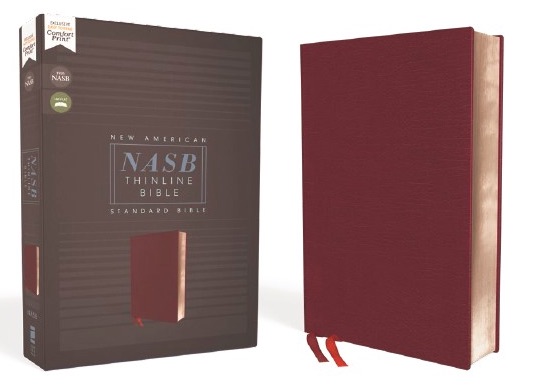
According to Bible Researchers, the first version of The New American Standard Bible (NASB): New Testament was published by Lockman Foundation in 1963, and the full Bible was published in 1971, with the most recent edition issued in 1995.
What is the most accurate translation of the Bible in the world?
The New American Standard Bible (NASB) is often regarded as the most accurate English Bible translation. It was formerly chastised for its uncomfortable and unnatural English as a result of its commitment to the idioms of the original languages, whether or not they were natural in English.
The Lockman Foundation published the New American Standard Bible (NASB) in 1995.
-
Interlinear Bible
The Interlinear Bible is closely as accurate to the Greek or Hebrew text, with verses laid out in English first with the Hebrew or Greek underneath using the King James Version or New American Standard.
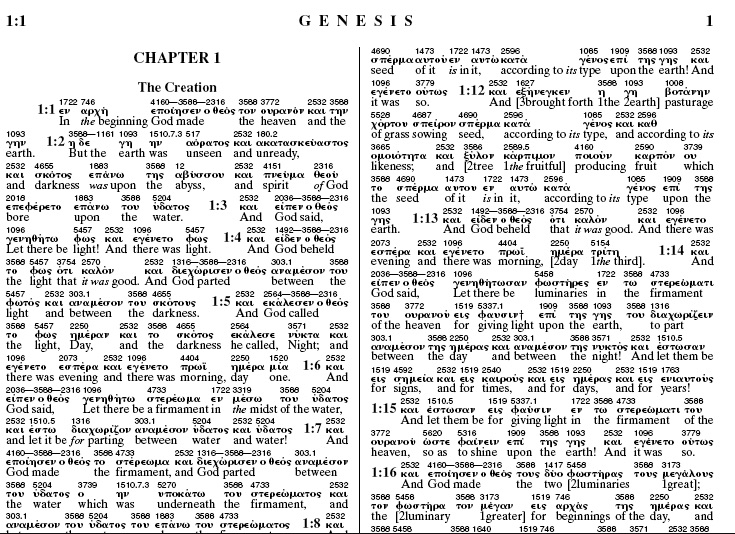
The English language is written first with interlinear versions, while the Greek or Hebrew text is underneath. The Interlinear Bible is also regarded as one of the most accurate Bible translations in the world.
-
The Amplified Bible (AMP)
The Amplified Bible (AMP) Translation of the Holy Bible was produced jointly by Zondervan and The Lockman Foundation in 1965 as a revision of the American Standard Version of 1901.
Which translation of the Bible is closest to the original text?
Determining which Bible translation is closest to the original is a complex and debated topic among scholars and theologians. The original texts of the Bible were written in Hebrew, Aramaic, and Greek, and over the centuries, the texts have been translated into numerous languages.
Several factors contribute to the challenge of finding the closest translation to the original:
1. Source Texts: The closer a translation is to the original manuscripts (known as the “autographs”), the more accurate it is considered.
2. Translation Philosophy: Different translations follow distinct translation philosophies, ranging from word-for-word (formal equivalence) to thought-for-thought (dynamic equivalence)..
3. Scholarly Expertise: The translation team’s expertise in the source languages and the biblical context influences the accuracy and faithfulness of a translation.
4. Textual Criticism: Decisions about variant readings in the ancient manuscripts can affect the translation outcome.
5. Version Updates: Some translations have gone through multiple revisions and updates over time, which can affect their accuracy and proximity to the original.
Given these considerations, several translations are often mentioned for their efforts to be faithful to the original texts:
1. NASB (New American Standard Bible:
Known for its formal equivalence, the NASB strives to maintain a literal rendering of the original languages.
2. ESV (English Standard Version):
Also following a formal equivalence approach, the ESV aims for accuracy while maintaining readability.
3. NKJV (New King James Version):
An update of the King James Version (KJV), the NKJV preserves the linguistic beauty of the KJV while modernizing some language and relying on updated source texts.
4. NIV (New International Version):
Utilizing a dynamic equivalence approach, the NIV prioritizes readability while aiming to capture the original meaning accurately.
5. NET (New English Translation):
Known for its extensive translators’ notes, the NET offers insights into the translation process and the reasoning behind certain choices.
It is essential to remember that no translation is perfect, and each has its strengths and weaknesses. Readers often benefit from consulting multiple translations and referring to scholarly resources to gain a deeper understanding of the biblical text. Additionally, learning the historical and cultural context of the Bible can further enhance comprehension and appreciation of the original message.
To evaluate which Bible translation is closest to the original text, we must first agree on what constitutes a valid change. For example, did Paul write “Jesus Christ” or “Christ Jesus” first?
In Romans 1:25, did he write “God” or “Lord”? Is it possible that both interpretations are correct? Or, if you find a manuscript with a different reading, does that make it suspect?
Textual criticism refers to the process of deciding which versions are valid. Textual critics will examine every manuscript they can discover in order to decide which were copied more properly than others. Some readings make more sense than others; some readings are shorter and hence more likely to be unique; some readings fit better with other works by the same author, and some readings agree.
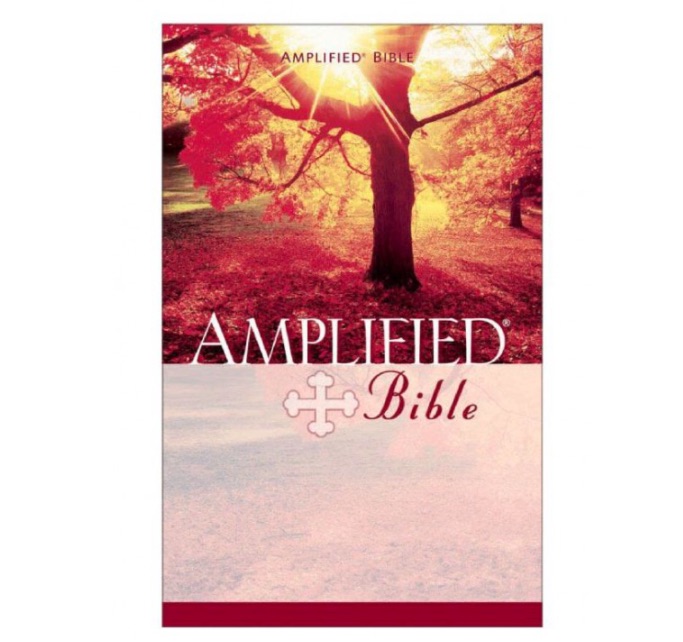
-
King James Version (KJV) – The Most Popular Version of the Bible
King James Version (NKJV) may not be the most accurate Bible translation, but it is widely regarded as the Most Popular Version of the Bible. Based on the Textus Receptus.
Why did King James translate the Bible?
Because he desired a Bible that his subjects could read, the existing versions were written in Latin, not the ordinary people’s vernacular.
The emphasis in early Protestantism was on the direct reading of the Bible by common people.
Tyndale’s full English Bible was published in 1525. He spoke in an early form of modern English, which was mostly incomprehensible to most people.
There were two other translations before King James’ (the Geneva Bible and the Bishop’s Bible), but they were also written in primarily formal English that ordinary people would not understand.
As a result, when King James ascended to the throne, there was no English translation available for his subjects to read, which meant they couldn’t read the word of God for themselves.

King James Version (KJV) – The Most Popular Version of the Bible
Is King James the original Bible?
The King James Version is an English translation of the Bible. It took 47 students, all of whom were Church of England members, to complete it in 1611.
Many Christians now consider it to be one of the best English Bible translations. This is not because of its correctness, as many mistranslations have been discovered, but because of its literary style, which some claim to be unrivaled in any other English-language book.
William Tyndale’s translation from Greek and Hebrew sources came before the King James Version. The majority of the Old Testament was translated by Tyndale, who was burned at the stake for his work.
-
English Standard Version (ESV)
The English Standard Version (ESV) was published in 2001 by Crossway despite not being much different from the New American Standard Bible (NASB) and based on the Revised Standard Version (RSV) of 1971, with about 6% of the text being revised to create the new English Standard Version.

The English Standard Version is founded on the principle of literal translation while taking into account changes in grammar, syntax, and idiom between modern literary English and the source text.
The English Standard Version is likewise a very literal view of the Bible and each Bible writer’s particular style. Its emphasis is on “word-for-word correspondence,” while also accounting for changes in grammar, syntax, and idiom between current literary English and the source languages.
Because of the success of the ESV translation, an edition incorporating the Apocryphal writings was published in 2009, while the ESV-CE was published in North America in late 2019, and The Augustine Bible was published in The United States of America in 2020.
The English Standard Version of the Bible has been distributed in more than 100 million print copies and more than 100 million electronically.
-
New King James Version (NKJV)
The New King James Version (NKJV) Bible Translation project was started in 1975 by 130 Biblical scholars and was completed in 1982 by Thomas Nelson to update the vocabulary and grammar of the original King James Version (KJV) while preserving the classic style and literary beauty of the original 1611 version.
The New King James Version was originally known as the Revised Authorised Version.
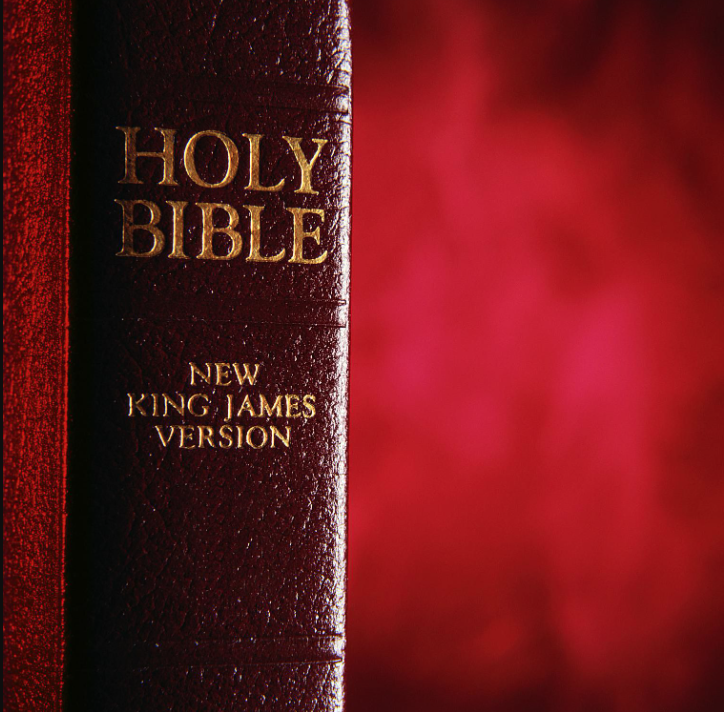
Updating the English of the King James Version of the Bible had significant changes in words, spelling, vocabulary, and, most importantly, grammar.
One of the most outstanding features of the NKJV was switching early modern second-person pronouns, such as “thou” and “thine.” This and other features make NKJV one of the most accurate Bible translations.
-
Contemporary English Version (CEV)
The Contemporary English Version, which is widely known as Bible for Today’s Family, was published by the American Bible Society. The project for the translation started in 1985; as a result, the speech patterns used in books, magazines, newspapers, and television – a study by Barclay Newman.
The Contemporary English Version was more focused on how English was read and heard.
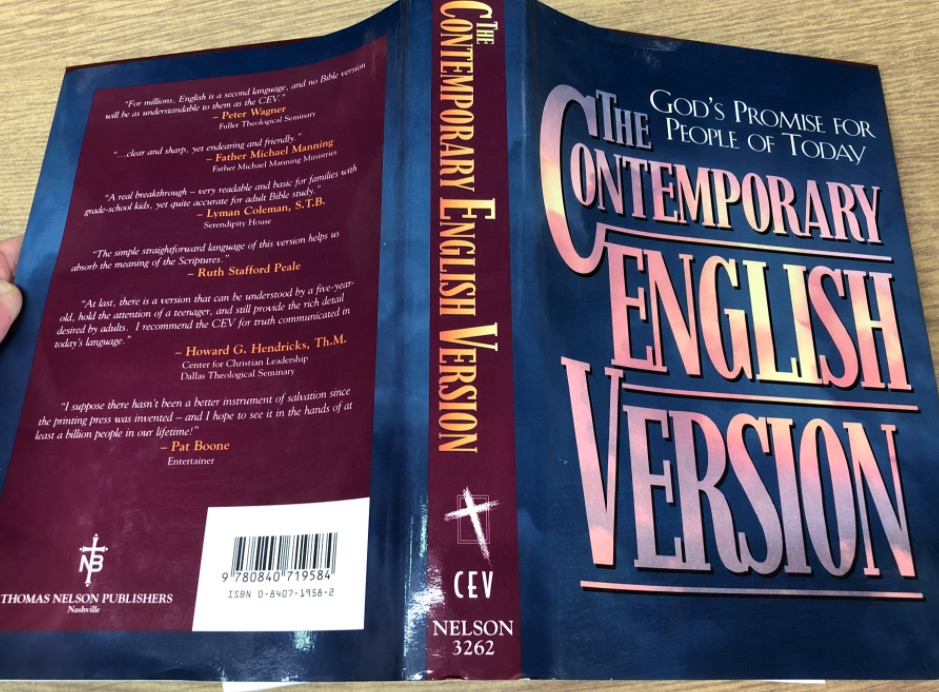
The three principles followed in the CEV translation were -: must be understood by readers without stumbling in speech, must be understood by people with little or no comprehension of “Bible” language, and must be understood by all.
The Contemporary English Version is relatively easy to read and understand, written in quality and contemporary English. However, the CEV sometimes goes astray, doing more interpreting rather than translating.
-
Christian Standard Bible (CSB)
The Christian Standard Bible (CSB) was developed by 100 Biblical scholars from 17 denominations and was first published in March 2017. It is a major revision of the Holman Christian Standard Bible (HCSB) 2009 edition.

This Bible translation has a good translation, easier to read than the Holman Christian Standard Bible.
The Christian Standard Bible translators adopted a methodology termed “Optimal Equivalence,” which draws from formal and dynamic translation philosophies, balancing contemporary English readability with linguistic precision to the original languages.
-
New Living Translation (NLT)
The New Living Translation (NLT) is largely known for translating the Bible into modern English due to the clear and natural English used in the translation.
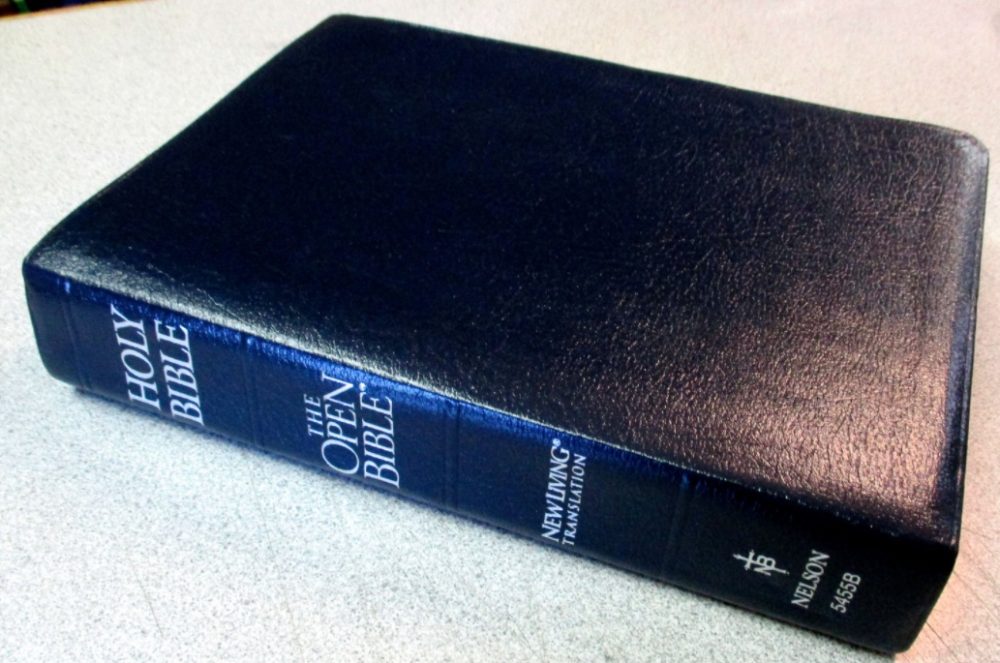
The New Living Translation of the Bible project evolved into a new English translation from Hebrew and Greek texts. The New Living Translation (NLT) is a thought-for-thought translation first published in 1996, then the second and third editions (2004, 2007).
The New Living Translation is written in quality and contemporary English. However, it tilted toward dynamic equivalence and less toward formal equivalence, making it do more interpreting rather than translating.
-
New English Translation (NET)
The New English Translation (NET Bible) is a totally new and free online translation of the Bible in the English language, published by Biblical Studies Press and sponsored by the Biblical Studies Foundation with over 60,000 translators.
The New English Translation was first published in 2005 by over 20 scholars.
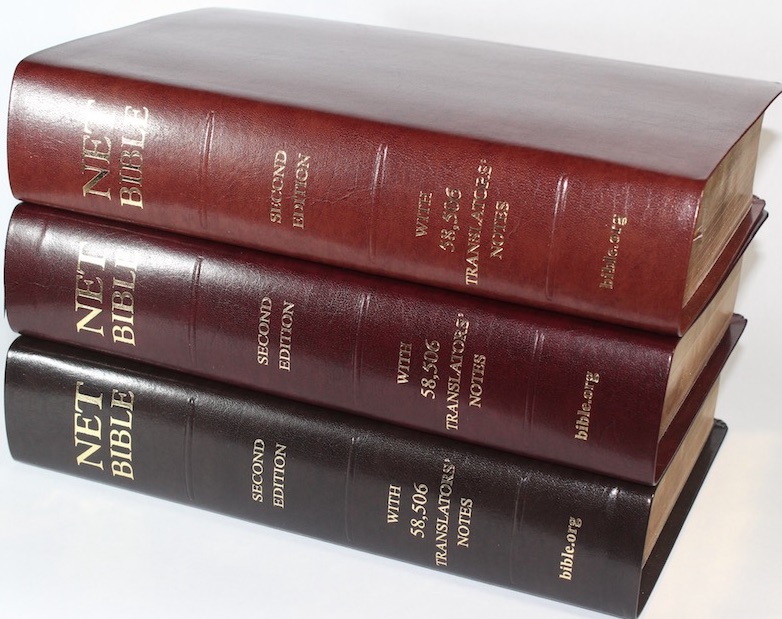
Scholars regard the NET as a first-rate translation and one of the most accurate Bible Translations; it is a completely new translation of the Bible, not an update or revision of an older version.
The NET is relatively a little too dynamic in its renderings, with more interpretation than simple translation. The NET is considered more formal than most of the other English Bible translations that are considered dynamic.
-
New International Version (NIV)
The New International Version (NIV) was first published in 1978 by the former International Bible Society, presently known as Biblical, to express the Bible broadly understood in modern English.
The New International Version (NIV) is regarded as a dynamic, thought-for-thought translation that took ten years to complete and involved a team of over 100 scholars.

The NIV Bible translation, one of the most popular and best-selling modern translations, has its recent edition in 2011. This version is one of the most accurate Bible translations despite interpreting a strict translation.
See our Amazing Bible Verses Wallpaper for Free Download
Most accurate Bible translation according to Scholars.
A number of Bible scholars believe this is because the many languages spoken by Jews at the time were not all the same.
There are a few elements to consider when determining which version of the Bible is most accurate if you are seeking the most accurate Bible translation. Some scholars argue that Hebrew and Aramaic manuscripts are more accurate than Greek translations because they were written in their native language.
Other academics, however, contend that a Hebrew text is not always more accurate than a Greek translation.
The first thing to keep in mind when selecting a Bible translation is that it should be based on your particular preferences. Some scholars argued that one style of Bible translation is more accurate than another. Others feel that no one translation of the Bible is superior to another and that each has its own set of strengths and limitations.
Today, various versions are available, including the King James Version, the New International Version (NIV), the Revised Standard Version (RSV), the New American Standard Bible (NASB), and the English Standard Version (ESV).
Each version has pros and downsides, so it’s critical to thoroughly read over each one and select one depending on your specific tastes.
Bible Version Facts
How Many Types of Bibles Are There?
According to Scholars, There are currently 101 different types of Bible, that is, 101 completed translations of the Bible in English.
Which Bible Translation is Best?
The New American Standard Bible (NASB) is widely considered the best Bible translation due to the abovementioned facts.
The Bible has 66 books in a total of both the Old Testament and New Testament and written by 40 different authors over a period of 1500 years.
List of Bible Translations
There is a list of Bible translations in English below to choose from when you are studying, reading the Bible, doing your research, or seeking help. You need to choose from the Bible translation you understand the most.
- King James Version (KJV)
- New International Version (NIV)
- New American Standard Bible (NASB)
- New King James Version (NKJV)
- English Standard Version (ESV)
- New Living Translation (NLT)
- Holman Christian Standard Bible (HCSB)
- New Revised Standard Version (NRSV)
- Common English Bible (CEB)
- New International Readers Version (NIRV)
- Easy-To-Read Version (ERV)
- New Century Version (NCV)
- New English Bible (NEB)
- American Standard Version (ASV)
- Good News Bible (GNB) / Today’s English Version (TEV)
- Amplified Bible (AMP)
- Today’s New International Version (TNIV)
- New English Translation (NET)
- Lexham English Bible (LEB)
- Revised Standard Version (RSV)
- Contemporary English Version (CEV)
- God’s Word Translation (GW)
- Complete Jewish Bible (CJB)
- Bible in Basic English (BBE)
- The Voice Bible (VOICE)
- Berean Study Bible (BSB)
- Tree of Life Bible (TLB)
- 21st Century King James Version (KJ21)
- Christian Community Bible, English version (CCB)
- Modern King James Version (MKJV)
- Modern English Version (MEV)?
- World English Bible (WEB)
- The Holy Bible: Jah International Version: The Sacred Scriptures of Rastafari (JIV)
- Names of God Bible (NOG)
- Revised English Bible (REB)
- Literal Standard Version (LSV)
- Emphasized Bible (EBR)
- Jerusalem Bible (JB)
- Douay–Rheims Bible (DRB)
- Coverdale Bible (TCB)
- Wycliffe Bible
- Tyndale Bible
- Coverdale Bible
- Matthew Bible
- Great Bible
- The Bishops’ Bible
- Douay-Rheims Version (DRV)
- Geneva Bible
- Concordant Literal Version (CLV)
- New American Bible (NAB)
- The Living Bible (TLB)
- The Message (MSG)
- Pure Word Bible (PWB)
- Young’s Literal Translation (YLT)
- 365 Day Bible (365DB)


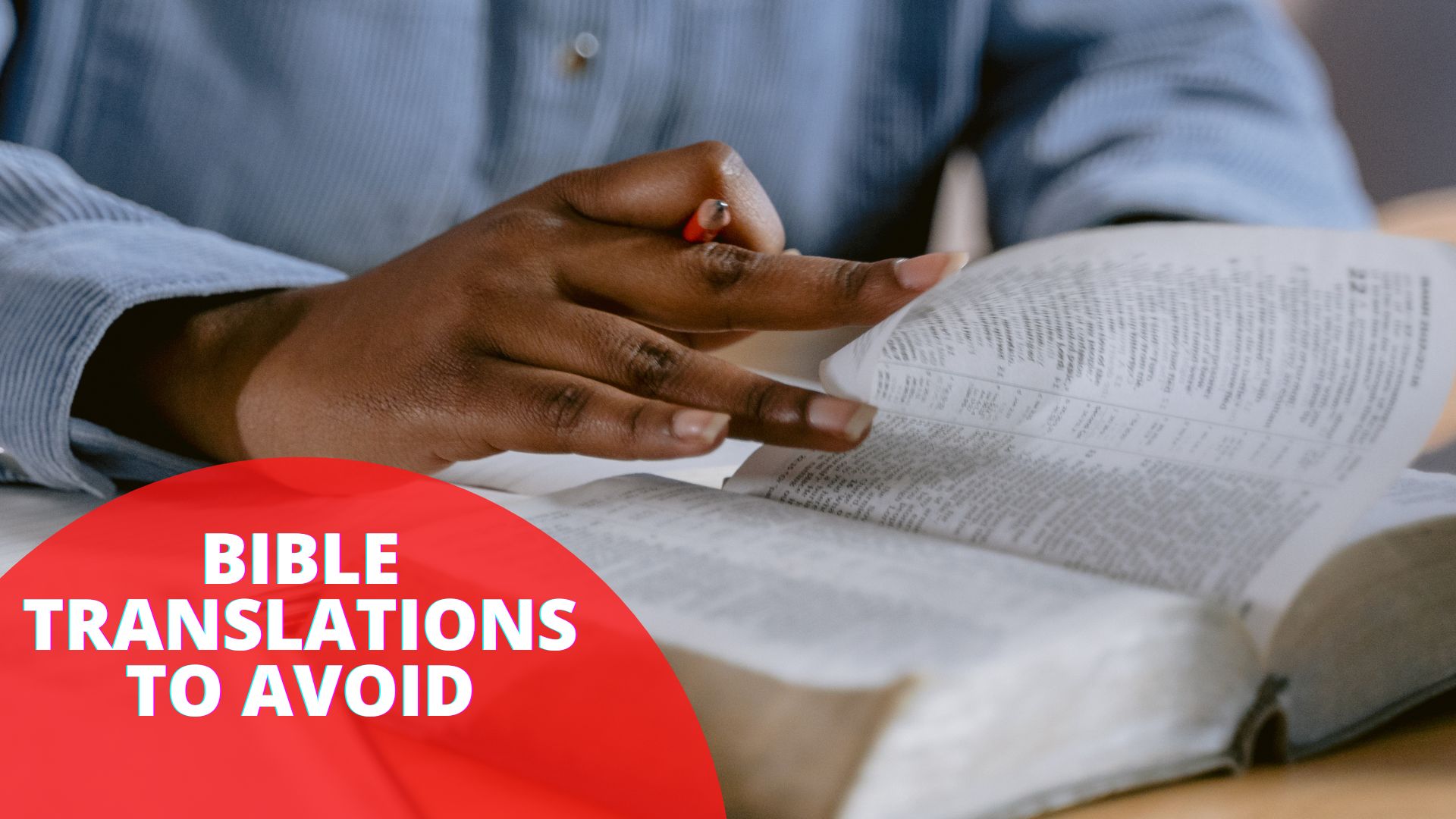


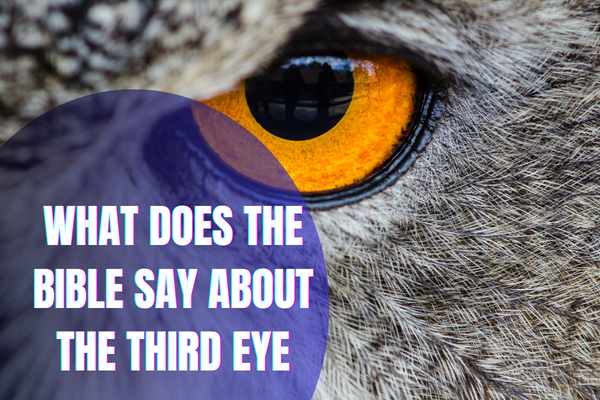
5 comments
How can I know that the information you provide is accurate and true?
The information provided in this post is based on careful research of studies done by scholars and theologians.